Wayne Higby (born 1943) is one of the most innovative second-generation artists to come out of the post-World War II American ceramic movement. Wayne Higby is a Professor and director at Ceramic Art at Alfred University and Museum. Higby is best known for making earthenware vessels and sculptures that involve spatial relationships with glazed landscape elements.
After graduating from the University of Colorado at Boulder in 1966 and the University of Michigan at Ann Arbor in 1968 with a B.F.A. in painting, Higby moved to Colorado Springs to pursue a career as an artist. Professor of ceramics at Alfred University (Alfred, New York) since 1973, he has been a member of the Alfred University faculty since 1973.
Since his one-person exhibition at the American Craft Museum in 1973, Higby has gained international acclaim for his work as a ceramic artist and an educator.
His art is based on “landscape imagery as a focal point of meditation,” and it includes anything from vessels to tile and sculptural pieces to name a few mediums.
Work spanning from vessel forms and sculpture to architectural installations expresses his view of the American environment, which has earned him national and worldwide acclaim for his talent and vision.
Infinite Place: This is the first major retrospective exhibition to present an in-depth critical analysis of the artist’s body of work, which was developed over forty years. The exhibition delves into the forms, techniques, and fire processes that Higby employed throughout his career, with a particular emphasis on his revolutionary work in raku earthenware as well as his latter porcelain production.
More than sixty ceramic items and drawings were on display, drawn from the collections of the Arizona State University Art Museum, the artist’s own collection, and various private and public collections, among others.
However, rather than concentrating on its functional elements, Higby uses the vessel form as a vehicle for imagery, which is frequently influenced by the western landscapes of his upbringing and emphasizes the interplay between light, space, and time.
“I strive to establish a zone of quiet coherence – a place full of silent, empty space where finite and infinite, intimate and immense intersect.”
Wayne Higby
Wayne Higby’s Career
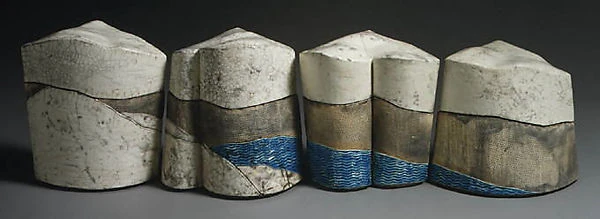
The Renwick Gallery is hosting the exhibition Skilled Work: American Craft, curated by Kenneth R. Trapp and Howard Risatti (Washington, D.C.: National Museum of American Art with the Smithsonian Institution Press, 1998)
Higby enjoyed riding alone on horseback up the crests of the sandstone mesas to the east of Colorado Springs as a child, and the panoramic vistas of canyons, rivers, and massive rock formations that he saw on his rides continued to emerge on his boats as an adult.
Wayne Higby’s Style
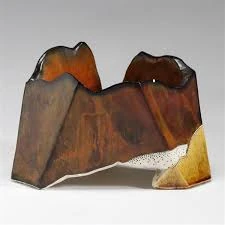
Higby has been experimenting with the merger of form and surface decoration since the early 1970s, when he began depicting panoramic western vistas on the surfaces of his earthenware bowls and covered boxes with painted designs.
Imaginative reinterpretations of the austere Colorado terrain of his boyhood inspire these picturesque embellishments. The two-dimensional, illusory image entirely penetrates the three-dimensional form of the object, integrating the surface and shape of the object by covering both the concave interior and convex exterior surfaces of the object.
The potter Wayne Higby has been exploring the union of form and surface design on the surfaces of his earthenware bowls and covered boxes since the early 1970s when he began depicting panoramic Western landscapes on the surfaces of his earthenware bowls and covered boxes.
Higby’s vessels are more than just useful containers; they are also works of art in their own right. They serve as starting points for the artist’s imaginary voyages through the stark Colorado environment of his early memories.
As a result of his use of perspective to show the countryside on his bowls, which encompass both the concave interior and convex outside surfaces, the two-dimensional image penetrates the three-dimensional form to a total depth of immersion.
As soon as the lines and colors on the inside and outside of the pot suddenly combine to form recognizable images, the surface, and shape of the pot are magically united, and the pot is magically transformed into an illusory scene that is infused with a sense of natural light and atmosphere thanks to the variegations in color, shade, and texture that occur accidentally during the raku firing process.
Wayne Higby’s Temple’s Gate Pass
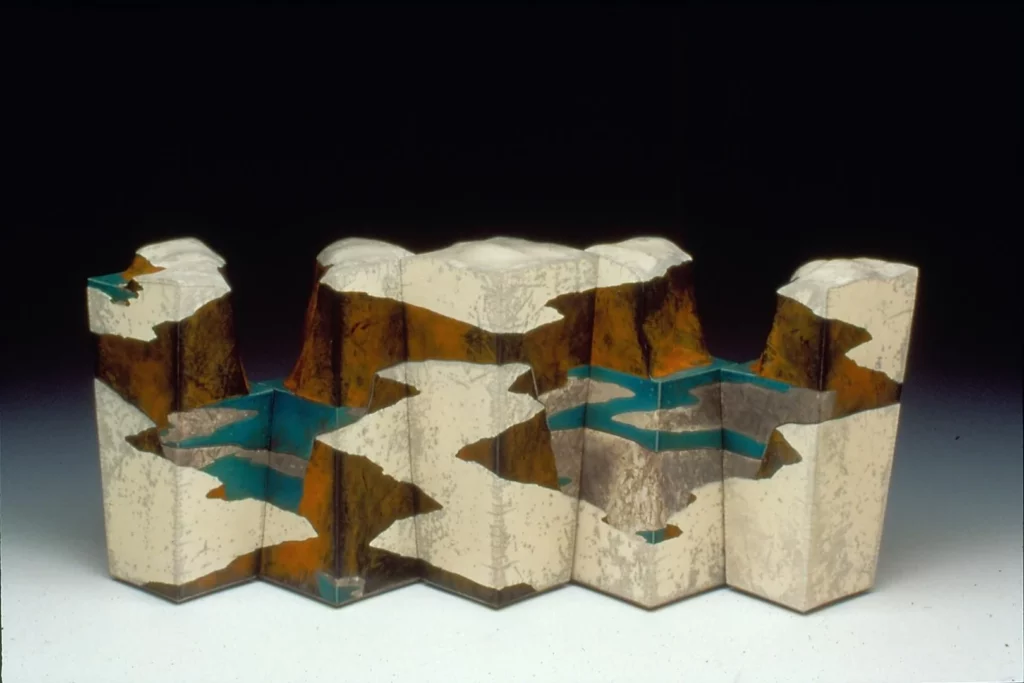
Kenneth R. Trapp and Howard Risatti Skilled Work: American Craft in the Renwick Gallery (Washington, D.C. National Museum of American Art with the Smithsonian Institution Press, 1998)
It was Temple’s Gate Pass that signaled a return to the covered box format that had been experimented with within the 1970s. Made during a leave of absence from teaching duties in 1986–87, it is constructed of five diamond-shaped, lidded boxes, each of which is conceptualized and decorated as a separate form.
However, when the slab-sided walls are placed corner to corner, they create a coherent, accordion-like plane across which is displayed a single, autonomous landscape vision, much like a panorama depicted on one side of a folding Oriental screen.
Higby’s multi-part piece, on the other hand, is entirely three-dimensional, and as the spectator circles the piece, the displayed scene, while maintaining its unity, changes constantly.
Temples gate pass is the meeting point of two canyons in a breathtaking panorama of snow-capped mesas punctuated by turquoise lakes and rivers.
It is not a representation of a specific location, but rather an abstraction of Western scenery. When it came to the actual composition, it was the austere geology of the Colorado mesas, which was characterized by clearly defined planes and edges, that served as inspiration.
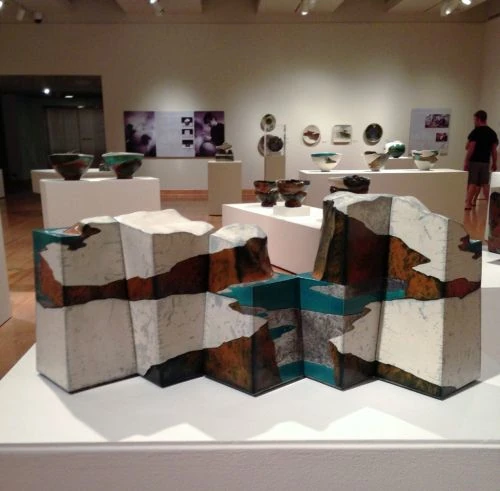
While the micro-geometry of the boxes, which is made up of rhythmically alternating, hand-built planes with some walls leaning in toward the viewer, while other walls leaning out toward the viewer, is reminiscent of the macro-geometry of the canyons themselves.
The landscape scene itself was based on a series of panoramic paintings created by the artist in 1988 that served as inspiration for the piece.
A concept was chosen, and he worked on it for a few days, first developing the physical structure of the linked boxes before developing the design in three dimensions, assuring its unity and continuous flow across several planes both before and after firing the pieces.
Jeremy Adamson KPMG Peat Marwick Collection of American Craft: A Gift to the Renwick Gallery (Washington, D.C. Renwick Gallery, National Museum of American Art, Smithsonian Institution, 1994)
Creating ceramics is a very personal endeavor for Wayne Higby, who draws inspiration from childhood recollections of riding his horse along rocky roads in Colorado.
In his work, he draws inspiration from ancient Chinese and Japanese landscape painters, who utilized their work as a means of connecting with the natural environment. Higby uses painting to reconnect with the wide-open landscapes of his childhood and to build a haven away from the stresses of contemporary life.
Wayne Higby’s Legacy

At the moment, Higby is a professor and holds the Robert C. Turner Chair in Ceramic Art at the New York State College of Ceramics, part of the Alfred University system.
The exhibition Infinite Place: The Ceramic Art of Wayne Higby is organized by Peter Held, curator of ceramics at the Arizona State University Art Museum Ceramics Research Center, and will run from September 15 through October 15. The Renwick Gallery is the second stop on a nationwide tour that began in New York City.
In addition to being a “visionary of the American Crafts Movement,” the American Craft Museum named him one of seven artists who are “real living legends representing the greatest of American artists in their chosen media,” according to the museum.
A well-known ceramic artist, he is best recognized for his imaginative use of Raku earthenware. He has developed an interest in porcelain as a result of his travels and lectures in China, where he has collaborated with artists to rejuvenate Chinese ceramic art.
Honorary President and co-founder (with Jackson Li) of the Sanbao Ceramic Art Institute in Jingdezhen, and Honorary Professor of Art at both the Jingdezhen Ceramic Institute and Shanghai University in the People’s Republic of China. He is also a member of the Chinese Academy of Arts.
He also serves as vice president of the International Academy of Ceramics, which is based in the Swiss city of Geneva.
Academics

- New York State College of Ceramics at Alfred University, Alfred, NY, 1973–present
- Rhode Island School of Design, Providence, Rhode Island, 1970–73
- The University of Nebraska at Omaha, 1968–1970
Wayne Higby’s Awards
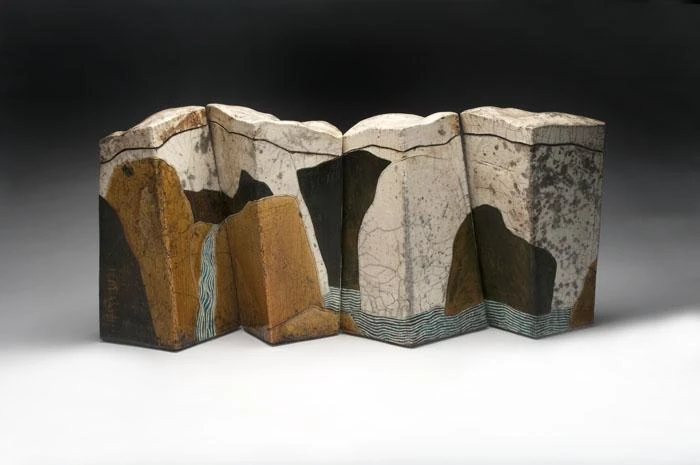
- Distinguished Educator Award, James Renwick Alliance, 2002
- Honorary Professor of Art, College of Fine Arts, Shanghai University, 2000
- Recognition of Excellence, American Ceramic Society, 1998
- American Craft Movement Visionary Award, American Craft Museum, 1995
- College of Fellows, American Craft Council, 1995
- Honorary Professor of Ceramic Art, Jingdezhen Ceramic Institute, P.R. of China, 1995
- Chancellor’s Award for Excellence in Teaching, State University of New York, 1993
- Master Teacher Award, University of Hartford, Hartford, CT, 1990
- George A. and Eliza Howard Foundation Fellowship, 1986
- New York Foundation for the Arts Fellowship, 1985, 1989
- National Endowment for the Arts Fellowship, 1973, 1977, 1988
Wayne Higby’s Exhibitions And Museums
- Wayne Higby: Landscape as Memory, 1990–1999, Museum of Art & Design, Helsinki, Finland, 1999
- Morgan Gallery, Kansas City, MO, 1991, 1997
- Hartford Art School, University of Hartford, CT, 1990
- Helen Drutt Gallery, New York, NY, 1988, 1990
- Greenwich House Pottery, New York, NY, 1984
- Okun-Thomas Gallery, St. Louis, MO, 1979
- Helen Drutt Gallery, Philadelphia, PA, 1976, 1978, 1979, 1980, 1982, 1996
- Exhibit A, Gallery of American Ceramics, Evanston, IL, 1975, 1978, 1980
- Museum of Contemporary Crafts (American Craft Museum), New York, NY, 1973
- Benson Gallery, Bridgehampton, Long Island, NY, 1971
- Archie Bray Foundation, Helena, MT, 1970
- Joslyn Art Museum, Omaha, NE, 1969
- American Craft Museum (now The Museum of Arts & Design), New York City, NY, USA
- Brooklyn Museum of Art, New York City, NY, USA
- Carnegie Institute, Museum of Art, Pittsburgh, PA, USA
- Honolulu Museum of Art, Honolulu, HI, USA
- Denver Art Museum, Denver, CO, USA
- Everson Museum of Art, Syracuse, NY, USA
- Fine Arts Museums of San Francisco, San Francisco, CA, USA
- Jingdezhen Museum of Art, P.R. China.
- Los Angeles County Museum of Art, Los Angeles, CA, USA
- Metropolitan Museum of Art, New York City, NY, USA
- Minneapolis Institute of Arts, Minneapolis, MN, USA
- Museum for Contemporary art Het Kruithuis,’s-Hertogenbosch, The Netherlands
- Museum of Fine Arts, Boston, Boston, Massachusetts, USA
- Museum of Fine Arts, Houston, Houston, TX, USA
- National Museum of Modern Art, Tokyo, Japan
- Renwick Gallery, Smithsonian American Art Museum Washington, DC, USA
- Philadelphia Museum of Art, Philadelphia, PA, USA
- Schein-Joseph International Museum of Ceramic Art, Alfred, NY, USA
- Smithsonian American Art Museum, Washington, DC, USA
- University of Michigan Museum of Art, Ann Arbor, MI, USA
- Victoria and Albert Museum, London, UK





